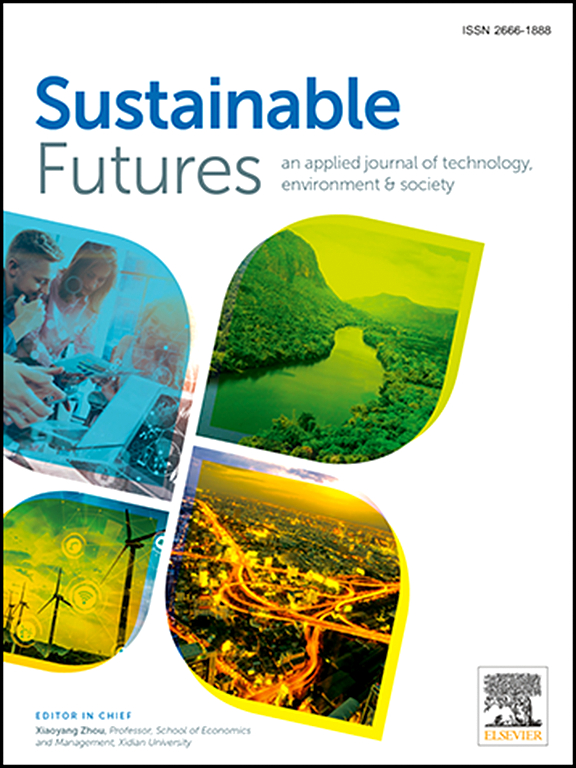循环经济策略在缓解完美风暴中的应用:建筑环境背景
IF 3.3
2区 社会学
Q2 ENVIRONMENTAL SCIENCES
引用次数: 0
摘要
水、能源和粮食资源同时不安全,被称为“完美风暴”,需要一个缓解资源安全和可持续性的解决方案。因此,鉴于循环经济概念与其对缓解完美风暴的贡献之间缺乏明确的关系,在建筑环境中存在差距,本文采用了系统文献综述(SLR)和文献计量分析的定性研究方法。本文分析了循环经济理念如何在建筑环境中有效地减少资源压力,从而缓解完美风暴。研究结果表明,在建筑环境中采用了九种成功的循环经济策略。为了在建筑环境中使用循环经济的概念来缓解完美风暴,本文提出了四(4)种循环经济解决方案,包括应用领域以及它们如何为可持续发展目标(SDG)做出贡献。这些是建筑施工中的材料效率& &;循环经济战略、资源效率、建筑4.0中的组织资本发展,以及解决资源不安全问题的智慧城市原则的采用。该论文的结论是,这项研究扩大了循环经济概念的应用范围,从制造业生产过程的需要到建筑环境中不可持续活动的预防,以及它如何有助于管理水、能源和粮食资源等资源。研究还提出了两项政策建议:针对建筑环境的循环经济供应链政策和针对可持续材料的循环经济融资。本文章由计算机程序翻译,如有差异,请以英文原文为准。
Applying circular economy strategies in mitigating the perfect storm: The built environment context
The simultaneous insecurity of water, energy, and food resources, known as the Perfect Storm, requires a mitigating solution for resource security and sustainability. Hence, given the existing gap in the built environment regarding the lack of a clear relationship between the circular economy concept and its contribution to mitigating the perfect storm, this paper utilizes a qualitative research methodology of Systematic Literature Review (SLR) and Bibliometric Analysis. The paper analyzed how the circular economy concept within the built environment can effectively reduce resource pressure, thereby mitigating the perfect storm. The research findings show that nine (9) successful circular economy strategies are used in the built environment. In using the concept of circular economy in the built environment to mitigate the perfect storm, the paper proposed four (4) circular economy solutions with areas of applications and how they contribute to the Sustainable Development Goals (SDG). These are material efficiency in building construction & circular economy strategies, Resource efficiency, organizational capital development in construction 4.0, and adoption of smart city principles, which address resource insecurity. The paper concluded that the study had widened the application of the circular economy concept from the need for production processes in the manufacturing sector to the prevention of unsustainable activities in the built environment and how it can aid in managing resources like water, energy, and food resources. The study also provided two policy recommendations: circular economy supply chain policies for the built environment and circular economy financing for sustainable materials.
求助全文
通过发布文献求助,成功后即可免费获取论文全文。
去求助
来源期刊

Sustainable Futures
Social Sciences-Sociology and Political Science
CiteScore
9.30
自引率
1.80%
发文量
34
审稿时长
71 days
期刊介绍:
Sustainable Futures: is a journal focused on the intersection of sustainability, environment and technology from various disciplines in social sciences, and their larger implications for corporation, government, education institutions, regions and society both at present and in the future. It provides an advanced platform for studies related to sustainability and sustainable development in society, economics, environment, and culture. The scope of the journal is broad and encourages interdisciplinary research, as well as welcoming theoretical and practical research from all methodological approaches.
 求助内容:
求助内容: 应助结果提醒方式:
应助结果提醒方式:


